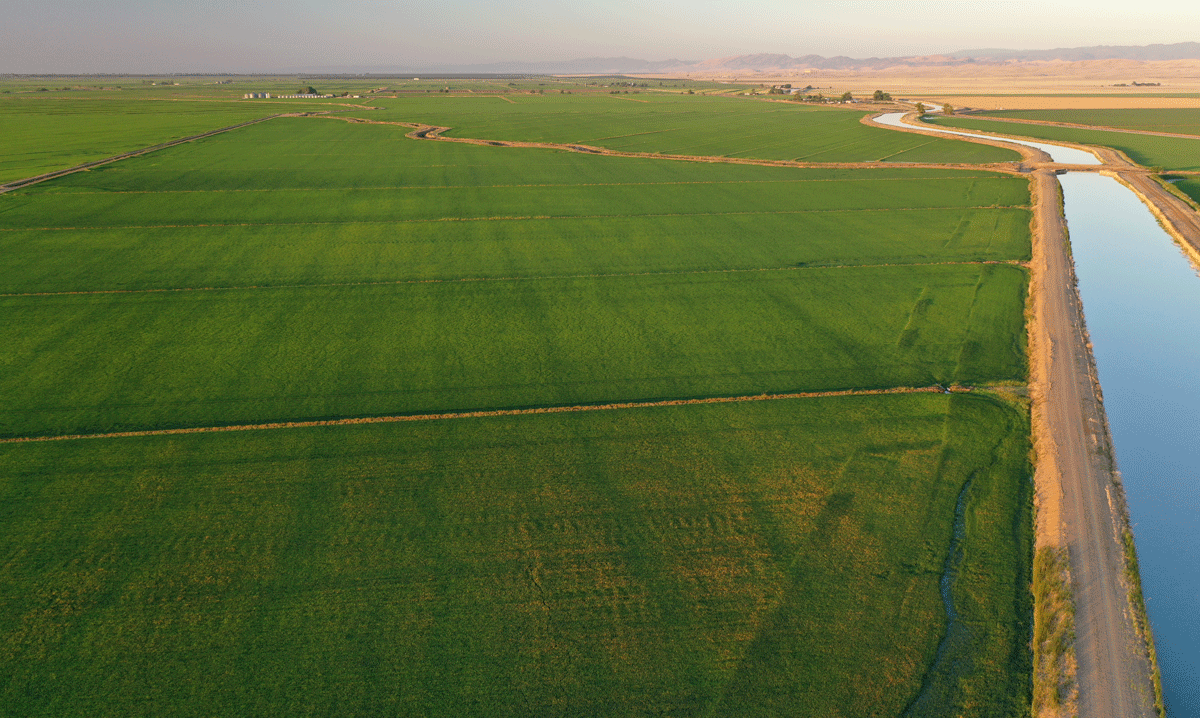 Rice as far as the eye can see (photo by Christine Wylie)
Rice as far as the eye can see (photo by Christine Wylie)
Jun 24, 2020
MOUNTAIN HOME, TX -- California rice growers are watching their thermometers as much as they are observing their rice fields these days. Daily high temperatures are forecasted to be well above 100 degrees through Saturday in Colusa which is located on the west side of the Sacramento Valley – reaching as high as 110 on Friday. Temperatures this high can have negative impacts on the crop but are much more damaging when the plants are first heading and pollination is occurring.
A major difference between California and the southern U.S. rice-growing region is nighttime temperatures. In California even when the daytime high is well above 100, night temps will usually drop into the 60s. In the south during a period of very high temps, often the nighttime temps will only drop to the high 70s or low 80s. These high nighttime temps can cause significant issues with both rice yield and grain quality.
Bruce Linquist, a rice specialist with the University of California Cooperative Extension Service, always has a good handle on the rice crop around the state. His assessment of the 2020 season thus far was that “rice farmers were overall able to get the crop planted in a timely manner and many farmers finished earlier than normal. In many areas, growers were able to begin field preparation very early due to an unusually dry spring.”
Right now, much of the state’s rice is at the panicle initiation stage of growth. Panicle initiation is where the panicle, which will later display the mature rice grain at harvest, begins to form inside the plant. This is generally considered the point where the rice plants shift from strictly vegetative growth to reproductive growth. The panicle initiation stage is timely for nitrogen application so a great deal of top-dress nitrogen is being applied aerially. Producers also are doing final clean-up herbicide applications to control weeds that were not controlled earlier.
“Stands look very good but with nitrogen applications being made during the current heat wave, there could be lodging issues at harvest due to rapid canopy growth,” said Bert Manuel, who farms near Yuba City. “Weeds are a big issue in California rice production and available herbicides are expensive and often ineffective.”
Christine Wylie who farms around Colusa notes a lot of good-looking rice in her area, although she echoes the concern about current high temperatures. “We were forecasted to have a high of 117 on Friday but, fortunately, that number has since been revised down some.”
Sean Doherty, a farmer from Dunnigan, added his voice to the chorus touting the quality of this year’s crop and predictions of early harvest. “Another thing we can feel good about is the incredibly low fuel prices during planting. Historically fuel prices are at or near their annual zenith when we start to plant but that was certainly not the case this year.”
“We’ve had some re-growth of weeds after two sprays but nothing major and actually more of an eye sore,” said Seth Fiack, whose operation is further north, near Glenn. “The crop looks good. The majority was planted 10-15 days earlier than normal.”
Linquist noted that early planting often bodes well for yields. Industry consensus is that California will have around 500-520,000 acres of rice this year with many predictions for totals toward the high end of that range.